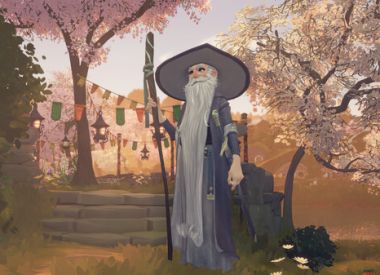I had the opportunity to try out a new communal VR experience at Siggraph, an annual conference on computer graphics technologies. The game is called Holo-Doodle, and up to five people enter the same VR space together as adorable robot avatars. You could then dance to thumping beats and communally doodle in different environments.
While I had tried other communal VR before with the Ghostbusters experience at Madame Tussauds in New York, it was structured around a tight narrative. You’d hunt ghosts across a few rooms with other people. What was exciting about Holo-Doodle is there weren’t rules or constraints – it was up to you and your fellow robots to experience it how you would like. Some people dances alone, some together, some focused on drawing. It was exciting to see a communal VR project that wasn’t just an attempt to make me feel like I was living in a scene from a movie. Instead, it provided a toolbox and an ambiance and stepped back to let me and my fellow users play however we wanted.
Holo-Doodle is a collaboration between director Daffy and VR producers Superbright, using technology developed by NYU professor Ken Perlin. To me, it is projects like this that represent the most exciting future for VR. While early VR has been an extremely isolating experience, now communal projects use VR to bring people together. I love the concept of using VR to create unique ‘hangouts,’ rather than limited narratives.
Another aspect of Holo-Doodle that I found particularly powerful was that the experience wasn’t limited to the few people inside the VR rigs. The music wasn’t just in their headphones but blasted through the entire space, the line of people waiting to try the experience also formed a voyeuristic dance party of their own. The walls of the space contained projections of random gifs set to the music and you could even see the shadows of the robot avatars cast on the wall in the real world. This is the first time that I’ve seen a VR experience that extends to physical world around the experience and isn’t just limited to what is happening in the headsets. Obviously, this aspect of the piece will only be available when set up by the team and not when the project becomes available for consumers at home, but it still felt like a fresh new direction for communal VR.
What’s exciting to me is that the early VR of the past few years was trying desperately to draw from film and videogames, but these new communal VR projects have much more in common with theater than any other discipline. Even though I have a PSVR at home, I find I rarely use it because of how isolated it makes me feel, but I would always be down to experience this new theatrical VR with friends. The creators hope to launch the project for home units soon and I’ll be sure to let you know when that happens.
















